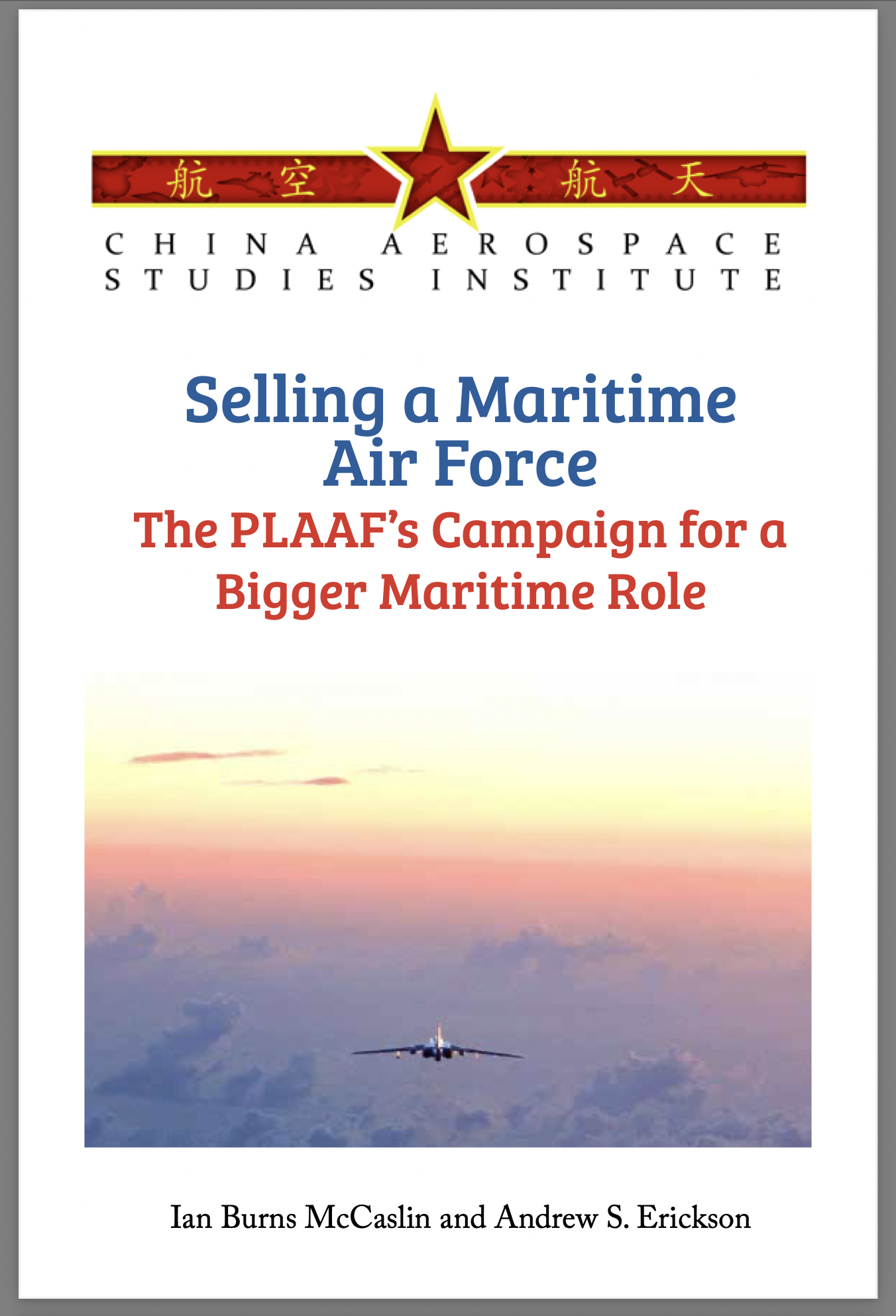Selling a Maritime Air Force: The PLAAF’s Campaign for a Bigger Maritime Role
Ian Burns McCaslin and Andrew S. Erickson, Selling a Maritime Air Force: The PLAAF’s Campaign for a Bigger Maritime Role (Washington, DC: China Aerospace Studies Institute, 1 April 2019).
Inter-service rivalry is an ever-present condition for militaries around the world. The People’s Liberation Army (PLA) is no exception to this rule. Since the end of 2015, the PLA has been undergoing massive reforms, both in strategic direction and in operational structure. The Chinese Communist Party has realized that, despite decades of investments, the PLA still has not caught up with the leading militaries of the world, although that is now an explicit goal. As part of this shift, the PLA is moving away from its traditional land-defense army-centric organization toward the more ‘modern’ arms of warfare – air, blue sea, space, and cyber. As these newer, at least newer to the PLA, missions gain in importance, it is not surprising that the bureaucratic tendencies latent in any system have begun to show themselves.
While the PLA Air Force (PLAAF) seems to have lost out on its bid to maintain control of PLA space issues, with the establishment of the PLA Strategic Support Force (PLASSF), it has started to make more concerted efforts to expand its presence and capabilities in the maritime domain. While both the PLAAF and the PLA Navy (PLAN) conduct aviation operations over water, the PLAAF is concerned that the rise of the PLAN’s aircraft carriers, and its attendant Naval Aviation arm, may be gaining influence and importance. As such, the PLAAF has undertaken a campaign toward increasing its relevance, capabilities, and presence, in the maritime domain. This study outlines the contours of that campaign, and its relevance to the future of both the PLAAF and PLAN Naval Aviation.
Inter-service rivalry is a problem that plagues all militaries from the moment they have more than one service. In the era of modern militaries, when ‘jointness’ is held up as the gold standard, inter-service rivalry, redundant capabilities, and service-specific interests are often vilified as examples of ‘backward’ thinking. Yet, while literature abounds on episodes of inter-service rivalry in Western militaries, particularly in the U.S. military, relatively little exists on this topic in English concerning non-Western militaries around the world. In particular, within the Chinese People’s Liberation Army (PLA), which despite recent personnel reductions is still the largest military in the world, and whose international profile has risen quickly in recent years, rarely has the service rivalry phenomenon been examined.
This work aims to address one small, but increasingly important part of inter-service rivalry in the PLA today, that of the concerted campaign by the PLA Air Force (PLAAF) to increase its relevance and responsibilities in the maritime domain at the expense of the PLA Navy (PLAN) and its branches, such as Naval Aviation and the Marine Corps. This campaign involves two parts. The first is the reshaping of the PLAAF to be better suited to carry out missions in the maritime domain through specialized training, increasingly complex and realistic exercises, highlighting the importance of air power to the success of naval operations, and developing previously undervalued branches of the service. The reshaping of the PLAAF is magnified by the second part of the overall campaign, a public relations (PR) effort or campaign to ‘sell’ the service in the maritime domain to the civilian government, the Chinese Communist Party (CCP), and even some of the public at large. This PR campaign makes use of both traditional media, such as commercials, television shows, and movies, as well as social media, especially Weibo, to convey the desired PLAAF message that the service is relevant in the maritime domain. However, there is often a stigma attached to PR campaigns; they may be seen as attempts to manipulate the public’s impression with no real sincerity behind them. This applies to a commercial brand, a politician, or a military. This feeling is something the PLAAF is likely trying to guard against during its PR effort. In order to bolster its image, it also appears the PLAAF relies on a small range of international good will activities, both done in real life and depicted in media, and is more heavily reliant on controversial Chinese sovereignty and maritime claims than the messaging of other PLA services, which tend to be more balanced. … … …






































